NYC’s Forgotten ‘War on Christmas Trees’
Discover how an obscure holiday crackdown affects festive street vendors today!

The Ed Koch Queensboro Bridge, as one of NYC's most beautiful and important bridges, has many interesting secrets!

The Ed Koch Queensboro Bridge, which connects Queens to Manhattan, rarely gets the attention that it merits. Many New Yorkers drive or bike across the bridge on a daily basis and it is also a popular running spot because it provides magnificent views of the East River, Roosevelt Island and Manhattan from high above.
Designed by engineer Gustav Lindenthal and architect Henry Hornbostel, it is the “longest of the East River Bridges, with an overall length of 7,449 feet,” according to the New York City Department of Transportation. The construction of the bridge began in 1901, and it officially opened on June 18, 1909. To better appreciate its history and significance, here are our top ten secrets of New York City’s Queensboro Bridge.
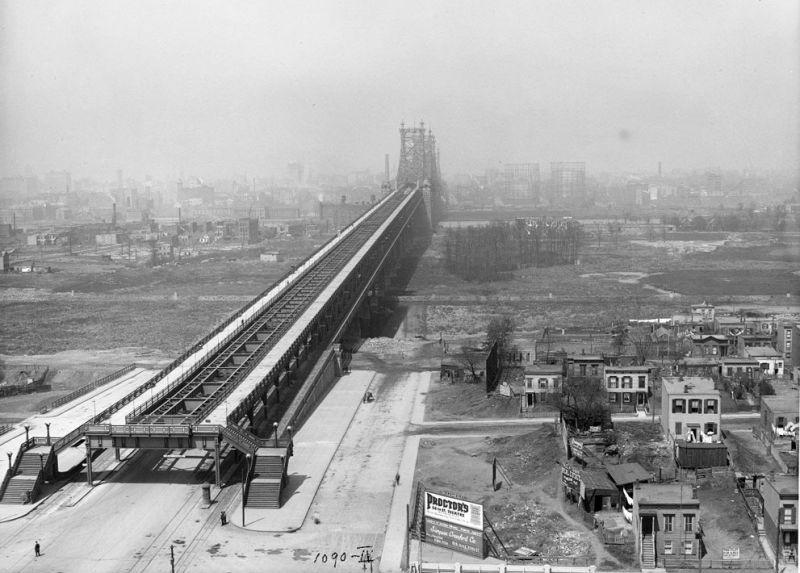
The Queensboro Bridge originally had a trolley line from 1909 to 1957. This trolley had an underground station at 2nd Avenue and went to Astoria, Flushing, College Point, Corona, Steinway, and Queens Boulevard, according to Joseph Brennan of Abandoned Stations.
Most importantly, the trolleys lasted until 1957 – even though the mode of transportation was being phased out. This was because of the stop at the middle of the bridge that allowed people to go to Welfare Island (now Roosevelt Island). Until 1954, this stop was the only way to get there.
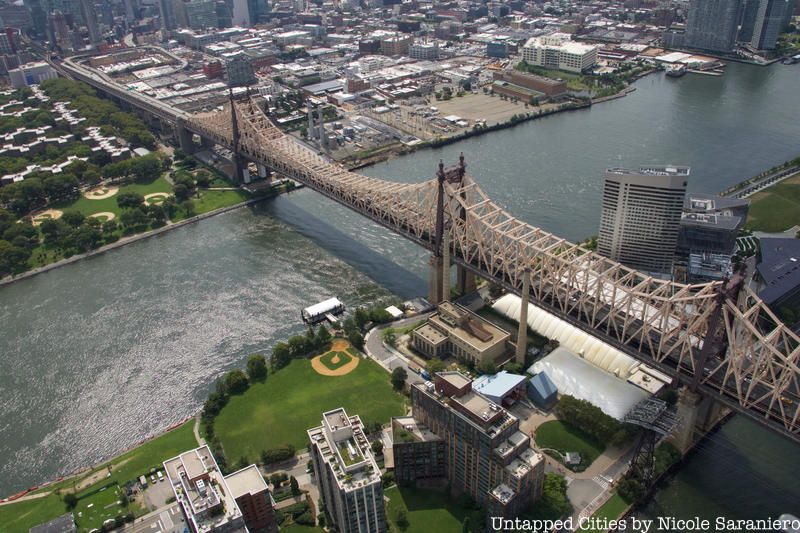
Originally, the Queensboro Bridge had both a passenger and car elevator that would take people down to Roosevelt Island. But once the Welfare Island Bridge was opened in the 1950s – it would later be known as the Roosevelt Island Bridge – this was deemed obsolete. However, this elevator was not demolished until 1970, with a passenger elevator being open as late as 1973, according to New York Magazine.
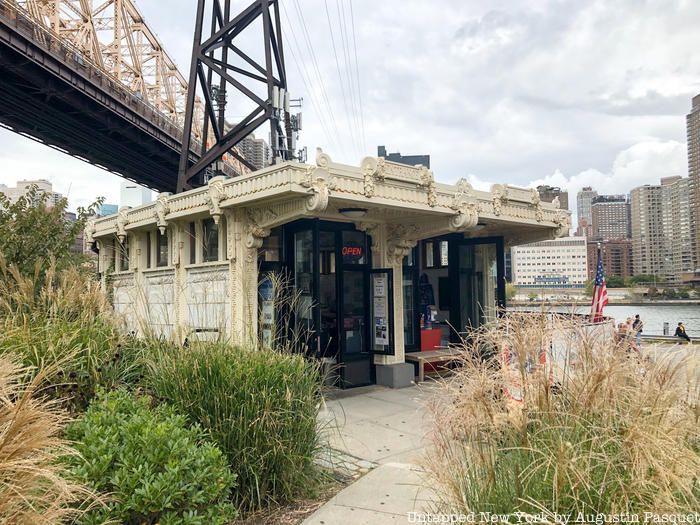
Way back in 1974, the Landmarks Preservation Commission designated the bridge a landmark. Also at this time, a defunct trolley kiosk from the Manhattan side and the bridge’s two lamps were removed to be incorporated into the facade of the Brooklyn Children’s Museum. The kiosk became the museum’s entryway while the two lamps were never actually used. According to the article and as you can see in the photograph below, the lamps “had thick posts in the shape of Greek columns with four arms holding up orbs of light and a larger orb at the center.”
One lamppost was returned shortly thereafter, but another was lost until 2011 when the 6000-pound base was discovered in a municipal storage facility by Mitch Waxman, a historian known for his tours of Newtown Creek. In 2014, it was moved back to Roosevelt Island and given to the Roosevelt Island Historical Society, who hopes to raise funds for its restoration. When the new building for the Brooklyn Children’s Museum was built by Rafael Viñoly, who would later design 432 Park Avenue, the kiosk was moved to Roosevelt Island where it serves today as the visitor’s center for the historical society.
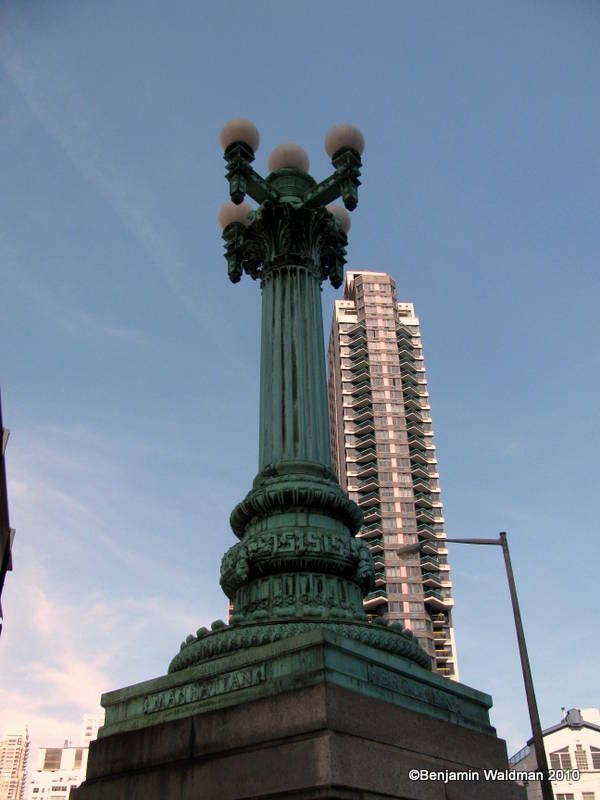
After a power failure incident in 2006 that left travelers suspended for hours, the city decided to renovate the tramways that transported commuters between Roosevelt Island and Manhattan. So between 2007 and 2010, the Roosevelt Island Operating Corporation invested $25 million to upgrade it, according to the company’s website.
As part of this process, the city chose a French company called Poma. The Roosevelt Island Operating Corporation stated, “[Poma is] one of only two companies in the world capable of designing, building and installing the Roosevelt Island Tram system.”
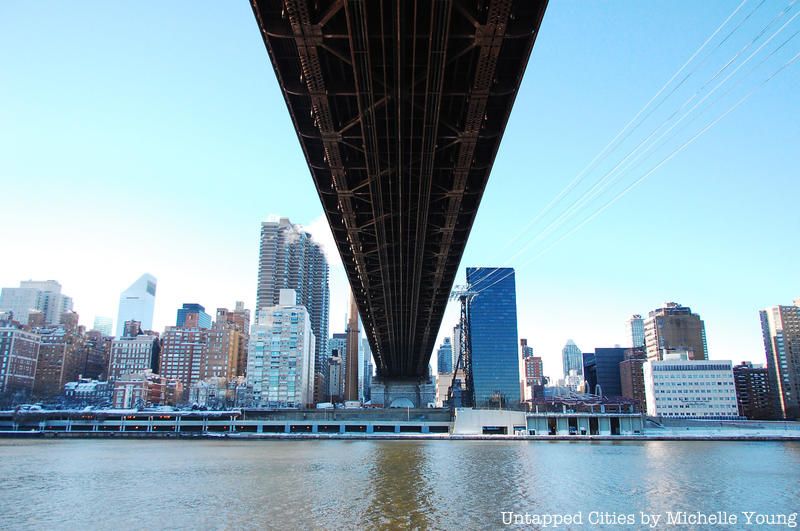
In 2011, Mayor Bloomberg decided to commemorate Ed Koch’s 86th birthday by naming the Queensboro Bridge after him. The Bronx native was famous for being New York City’s 105th mayor, with his term starting in 1978 and ending in 1989.
However, the renaming of the bridge was not taken lightly, as 64 percent of New York City voters and 70 percent of Queens voters opposed this decision, according to a 2011 Quinnipiac poll. Councilman Peter F. Vallone Jr. of Queens said at the time, “No one would ever think of renaming or co-naming the Brooklyn Bridge.”
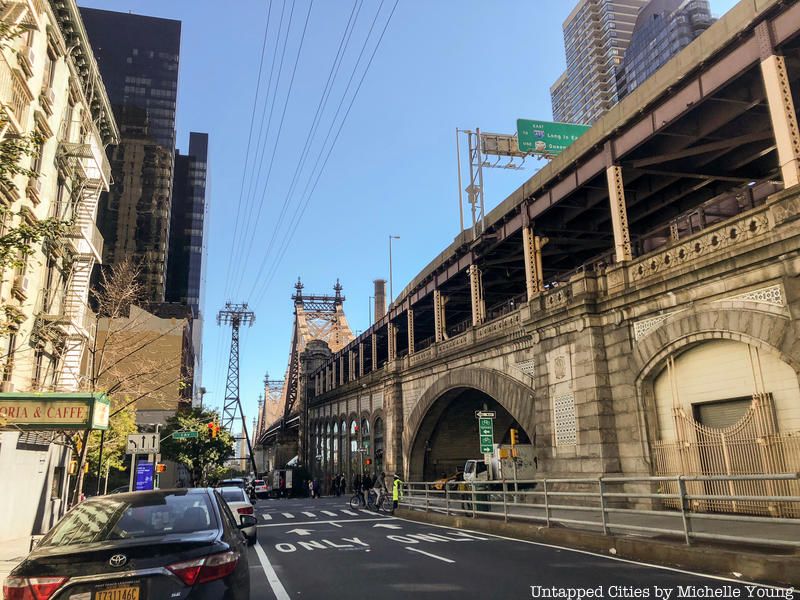
After a series of grievances during the Queensboro Bridge’s long construction period, the workers union conspired to blow it up with dynamite. George E. Davis, who was arrested and confessed to the conspiracy in 1908, stated that he planned to use over 200 pounds of dynamite to complete the job.
The only thing that saved the bridge was a late discovery by the criminal himself: a firehouse located at the base of the bridge, where at any time would be “20 to 30 firemen at work.” Refusing to kill anyone, he removed the dynamite and only confessed to the crime later.
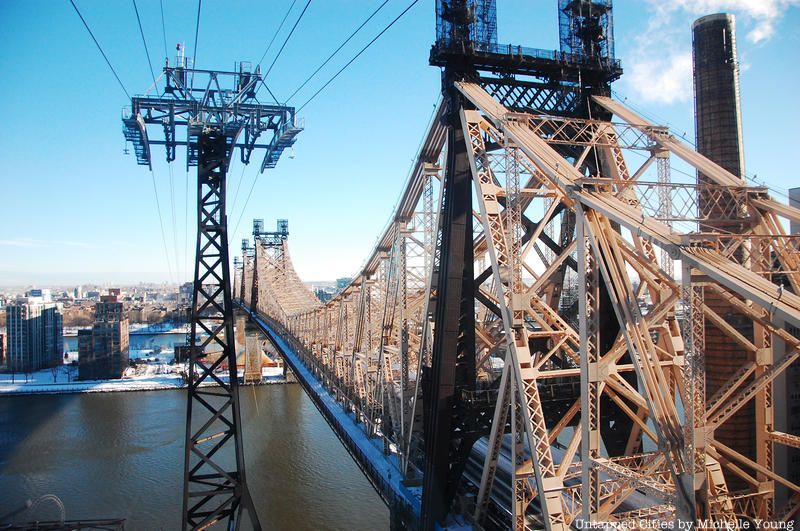
When the bridge opened in 1909, motorists were accosted with a 10-cent toll for crossing the bridge. However, this was quickly abolished in 1911 by then Mayor William J. Gaynor, who called the price tag “inconvenient and irksome.” The idea to add a toll to Queensboro Bridge was shot down in the early 2000s, but Assemblyman Robert Rodriguez reintroduced the possibility in March 2016.
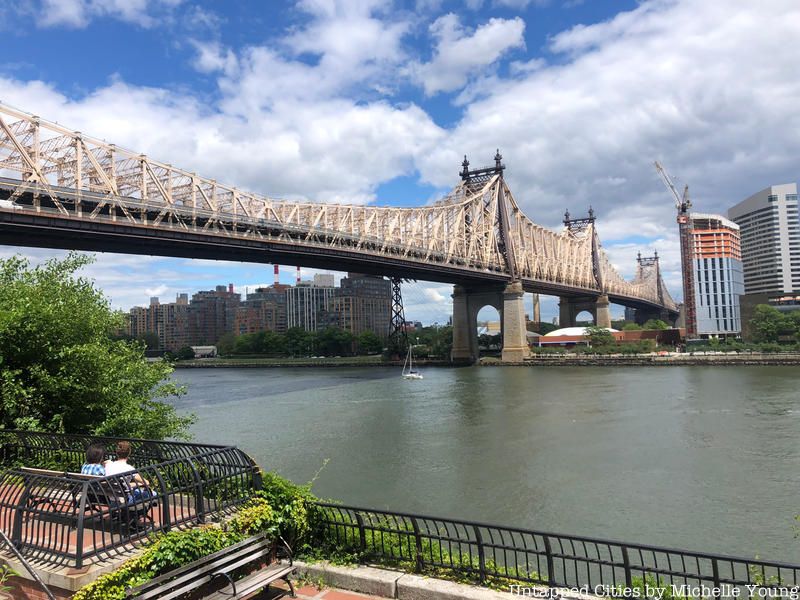
While the Queensboro Bridge may not receive enough attention, it has been a part of America’s popular culture for decades. From classics like Woody Allen’s Manhattan and Highlander to sequels like Death Wish 3 and Home Alone 2: Lost in New York, this bridge has gotten plenty of times to shine.
But perhaps its best moment comes from The Great Gatsby. While crossing the bridge, Nick Carraway states “The city seen from the Queensboro Bridge is always the city seen for the first time, in its first wild promise of all the mystery and the beauty in the world.”
As one of our reader notes, the Queensboro Bridge is also the subject of the Simon and Garfunkel song “The 59th Street Bridge: Feelin’ Groovy.”
On one day of the year, the Ed Koch Queensboro Bridge truly gets its moment to shine: the day of the New York City Marathon. It is one of five bridges that are used: with the others being the Verrazano, the Pulaski Bridge, the Willis Avenue Bridge and the Madison Avenue Bridge.
But the Queensboro Bridge gets special attention because it is both the entrance to Manhattan and, at around 15 miles in, the place where runners begin to really feel the burn. As a two-time New York City Marathon runner, I can confirm that the entrance into Manhattan is one of the hardest aspects of the race.
In 2009, the Queensboro Bridge turned 100 and it was celebrated in style. After Mayor Bloomberg reenacted the original 1909 opening ceremony, “marching bands played, vintage automobiles ferried borough presidents from their respective sides” and other festivities commemorated the milestone, according to StreetFilms.
Next, read The Top 10 Secrets of NYC’s Williamsburg Bridge, The Top 10 Secrets of the Brooklyn Bridge and Urban Exploration Atop NYC’s Queensboro Bridge [Photos].
Subscribe to our newsletter